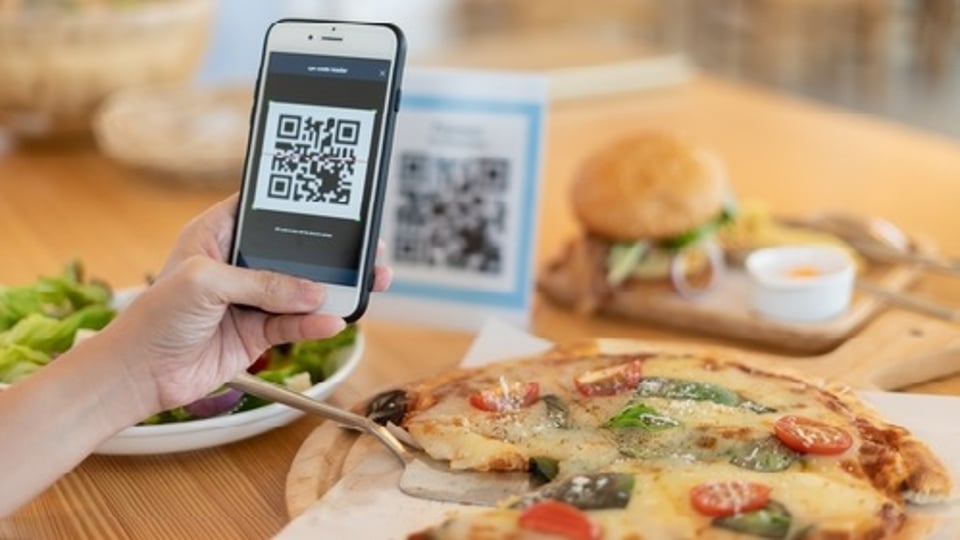The Future of Hospitality: Digital Signage and the Internet of Things
The future of hospitality is smart. New pieces of tech are streamlining and automating guest services at everything from hotels to concert venues to quick-service restaurants, boosting both engagement and efficiency. But while there is a marked push to automate the hospitality industry, there has been less focus on forming connections among the smart devices involved. Yet this integration is crucial so that devices can exchange valuable data and communicate with one another.
The need for integration is especially apparent when it comes to digital signage, which produces dynamic content that can be paired with real-time information streams to display relevant information. Integrating Internet of Things (IoT) devices – everything from room capacity sensors to temperature gauges – into digital signage can significantly enhance information delivery and guest experience. Take the case of college dining halls, if one dining hall is packed to capacity while another has short lines, displaying this information in real time on your digital signage or app can influence student dining decisions and increase overall satisfaction.
So, to truly harness the power of digital signage, providers must bring the technology online and connect it to live feeds of information. And by further connecting these signs to an establishment’s backend network of IoT devices, these businesses can provide real-time updates and more personalized service.
Why integration?
The real power of IoT lies in the ability it engenders to businesses to link all of their devices up and generate relevant and useful data. In particular, the integration of digital signage with a larger IoT system creates a powerful synergy that significantly enhances guest experience in various hospitality settings.
In the case of hotels, IoT integration enables digital signs to provide real-time updates about services around the premises. And this can occur because the signs are connected to the various reservation systems. Whether it's information about wait times at the restaurant or spa availability at the resort, guests can receive up-to-date information clearly displayed around the hotel campus.
Digital signs can also display personalized content by analyzing data from IoT devices, like room temperature sensors and beacon technology that monitors guest behaviors and movements. For instance, digital signs can welcome hotel guests by their names triggered by their smartphone when they enter the building, or offer tailored recommendations based on their movements around the venue and purchase history. At concert venues, IoT systems can track mobile payments on a guests’ phones and suggest additional food and beverage purchases at a vendor close to their seats.
IoT integration is also about leveraging real-time data to boost sales. Consider the example of dynamic digital menu boards. When connected to real-time information feeds, menus can change displays based on real-world events, like instantly displaying a special item based on a trending topic or the winner of a baseball game. The dynamic content is flexible and can shift depending on a variety of factors, including weather forecasts. If the smart menu knows the temperature is dropping, it might display a promotion for hot chocolate.
How to integrate
It’s important to note that IoT is not necessarily the easiest technology to implement. Because IoT encompasses a wide range of different devices with varying communication protocols and data formats, integrating these devices into a unified system requires creating a compatible framework for communication. Hospitality providers need to ensure seamless data exchange among different devices and systems.
At first, many IoT devices and digital signage platforms may not be compatible. Take the example of hotels, which often have a mix of legacy and modern systems for various functions like room bookings, security, HVAC, and guest services. Integrating devices working on radically different systems, some of which are outmoded, can prove challenging.
The solution lies in utilizing middleware, a software that sits between the application layer and operating system layer of your infrastructure stack, to enable data flow between these two components. The middleware can act as a translator, bridging the communication gap between different protocols and technologies. For instance, one device might use Bluetooth, while another uses Wi-Fi or Zigbee. Middleware translates the messages sent by these devices into a common language that all devices and the central system can understand.
Middleware can aggregate data from multiple IoT devices, process it, and then send relevant information to the digital signs. So, for instance, say you have IoT heat sensors that determine a museum exhibit is at full capacity – that information can be passed on to a digital sign and used to redirect guests in the museum to other less crowded exhibits.
Final thoughts
In the ever-evolving world of hospitality, the magic happens when all of your smart technology is fully capable of intercommunication. And digital signage can be a crucial part of this. Think of your hotel room welcoming you by name or your favorite restaurant suggesting dishes you'll love, all thanks to integration.
Why does it matter? Because IoT integration isn't just a trend. It's the future of guest service. So whether you're in a hotel, a quick-service restaurant, or any other hospitality venue, it’s time to embrace a smarter, more connected experience that’s entirely scalable.
About the Author
Emily McCue Baldeschwiler is the Product Manager for Food & Beverage at Spectrio. Emily has 10+ years of experience working with the Food & Beverage industry, leading new product innovation, development, and consumer research. At Spectrio, she partners with clients, account managers, and product development to enable innovative, metric-driven solutions to meet business needs.






